



Copyright © Marco Pronk 2013
All Rights reserved. This e-publication is protected under copyright law. No part of this publication may be reproduced, stored in a retrieval system, or transmitted in any form or by any means, electronic, mechanic, photo-copying, recording or otherwise, without the prior permissions of the publisher Thaiworld Editions. This book is sold subject to the condition that it shall not, by the way of trade or otherwise, be lent, re-sold, hired out, or otherwise circulated without the publisher’s prior consent in any form of binding or cover other than that in which it is published and without a similar condition including this condition being imposed on the subsequent purchaser.
The Essential Thai Language Companion
Reference Book: Basics, Structures, Rules
1st Edition 2013
First published 2010 in German as:
"Der umfassende Thailändisch Lehrgang.
Basisbuch Theorie: Grundlagen & Regeln."
Cover Art: Aswin Sangiamsuntorn
Graphic Design & Illustrations: Aswin Sangiamsuntorn
Layout: Aswin Sangiamsuntorn & Parichat Rodpunna
Proofreading: Naphat Nukulrod, Benjamin Stöckli & Sylvia Stöckli
Publication:
Thaiworld Editions
Militärstr. 90
8004 Zürich
Switzerland
www.thaiworld.ch
ISBN 978-3-9523664-8-6


iii
Preface
PREFACE
Have More Fun With Thai Language
Languages reflect culture-specific worldviews – mastering a language is like possessing a key to other people's views, thoughts and hearts. Being familiar with the local idiom means enjoying a higher level of the quality of life in any place on earth. And this is probably more true for knowing Thai than for any other language: even knowing only a few words and expressions means being welcomed with open arms and becoming an active part in the everyday life of lovely, playful and fun-loving people. Being able to speak Thai in Thailand simply grants you getting closer to and having more fun with the people. And once you are able to read and perhaps even write in Thai, your stay in Thailand becomes even more interesting, satisfying, enjoyable. You will see for sure.
Who Can Learn Thai?
Everyone can learn Thai, of course. Knowledge of a language is not an inborn disposition, it is always aquired through learning. Forget about preconceptions saying that only a 'genius' can reproduce the exotic Thai sounds. Certainly, we should not pretend that English speakers can learn Thai language easily. But if you give it a try, you will soon be rewarded, no doubt about that.
Due to its specific history of development, Thai language is a peculiar combination of the tonal nuances known in Chinese languages, long word compounds of Indic languages, and a scripture derived from Khmer language, which was itself adopted from Brahmi-script of ancient India. This distinct combination makes Thai a unique, melodious and dynamic language. Nonetheless: each of these characteristics can be learned by English speakers, so Thai language may not be as hard to pick up as you may have thought at first.

iv
Preface
About This Book
This language guide is based on more than 20 years of experience in teaching Thai as a foreign language to German speakers. The success of this book's original German version was convincing enough for deciding to make the ideas developed in the context of this language course available to a larger audience in the English language world as well.
Above all, after long years of testing in class, this book introduces a didactical novelty in teaching a tonal language: Each of the five tones of the Thai language is represented by a specific color. This does not only ease visual capturing and long-term memory of the tones, it also means that you do not need to learn a sophisticated system of unnecessary diacritical marks or symbols. Simply learn a specific color representing one of the the five tones instead (see page 37).
Overall, this book provides an introduction to the basic features and patterns of Thai language, so you don't need any previous knowledge about Thai. Apart from addressing absolute beginners, however, this book also serves as a reference guide for more advanced learners as well.
For anyone studying a foreign language, the process of learning is never achieved without any efforts. If you are serious about learning Thai, you will have to sit down and study letters, vocabulary, basic rules and principles – and probably have to do so on a daily basis. It is hoped, however, that this language guide may be the right companion assisting you in a smooth, clear, and comprehensive way.
A book can certainly never replace a live teacher, so it is doubtlessly always a good idea to find someone who can assist you with your learning efforts. But together with your teachers and Thai friends, this book may hopefully be an inspiring and clarifying source of knowledge on your journey towards mastering the Thai language.

v
Preface
Remarks on Romanization
When learning Thai, it is essential to work particularly on a precise pronunciation. Apart from the tricky tones (in this book represented by colors), Thai consonants and vowels may prodcuce sound combinations that sound odd to our ears – perhaps because they do simply not exist in English. That is why it is recommended to learn the Thai alphabet as early as possible, and get rid of romanized transcriptions as soon as you can: some Thai sounds can simply not be reproduced by romanized transcription. Certainly, it is a necessity to use romanized transcription at the beginning – without romanization, this book would not have been possible. But it must be emphasized that romanization of Thai is essentially imprecise; at best, any romanized version is a sketchy approximation of what Thai actually sounds like.
To date, none of the various romanization attemps have produced an official or widely accepted version. The most precise transcription system would, of course, be found in the International Phonetic Alphabet (IPA). Whereas this system is widely used by linguists in academic contexts, it seems less suitable for a romanization of colloquial Thai in a simple textbook. In the context of this book, it was thus decided that the IPA would be too advanced for non-academics not familiar with IPA's signs and symbols. Time and energy are better invested in learning Thai directly.
On the other end of the precision scale, a very simple approach is found in the Royal Thai General System of Transcription. But its simplicity has its price, as it completely lacks hints at the five tones, makes no distinctions between long and short vowels, and no distinctions between pronunciation variations among some of the consonants. So the Royal Thai System is not suitable for this book either, as it is oversimplified where more precision is considered critical.
So, finally, the romanization system developed for this book is a compromise between the precision of phonetics, and the more reader-friendly Royal Thai System. To make their similarities and differences more clear, an overview of the three systems is provided on the following pages.
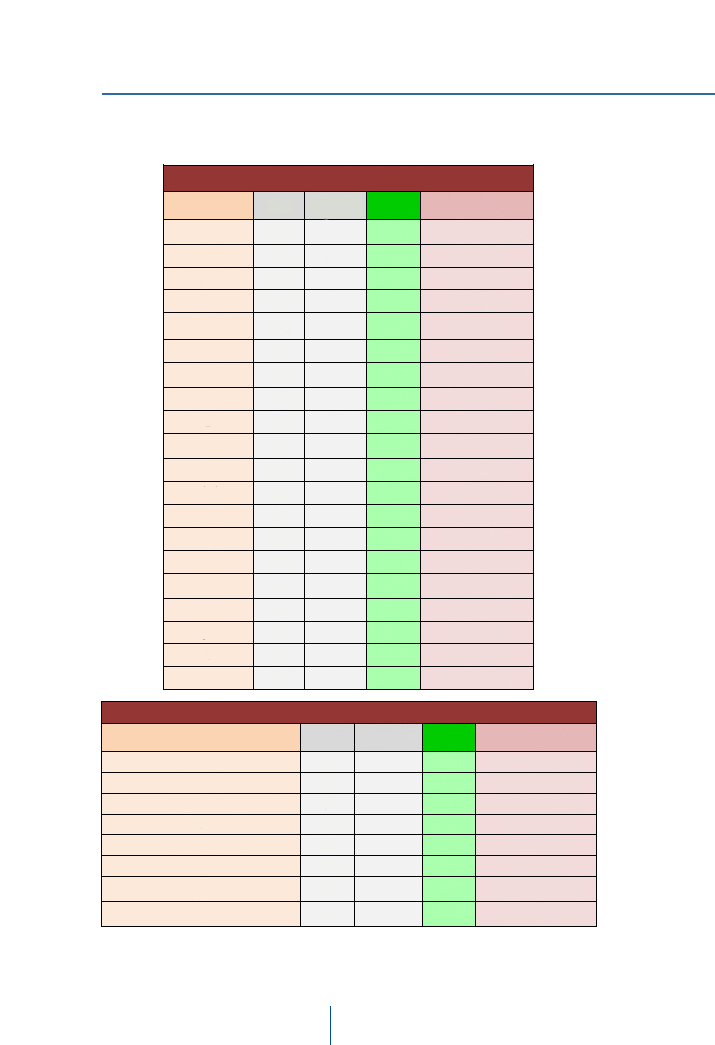
vi
Preface
Romanization: Consonants
Consonant Initials: |
||||
Consonants |
IPA |
Royal Thai |
This |
Remarks |
ก |
[k] |
k |
g |
unaspirated k |
ข ฃ ค ฅ ฆ |
[kh] |
kh |
kh |
as in car” |
จ |
[tɕ͡ ] |
ch |
j |
as in „john“ |
ฉ ช ฌ |
[tɕ͡ h] |
ch |
ch |
as in “chat” |
ศ ษ ส ซ |
[s] |
s |
s |
as in “see” |
ฎ ด |
[d] |
d |
d |
as in “do” |
ฏ ต |
[t] |
t |
t |
unaspirated t |
ฐ ถ ฑ ฒ ท ธ |
[th] |
th |
th |
as in “tea” |
บ |
[b] |
b |
b |
as in “bee” |
ป |
[p] |
p |
p |
unaspirated p |
ผ พ ภ |
[ph] |
ph |
ph |
as in “pie” |
ฝ ฟ |
[f] |
f |
f |
as in “far” |
ง |
[ŋ] |
ng |
ng |
as in “sing” |
ณ น |
[n] |
n |
n |
as in “no” |
ม |
[m] |
m |
m |
as in “mad” |
ร |
[r] |
r |
r |
rolling r |
ล ฬ |
[l] |
l |
l |
as in „left“ |
ญ ย |
[j] |
y |
y |
as in „yes“ |
ว |
[w] |
w |
w |
as in „why“ |
ห ฮ |
[h] |
h |
h |
as in „happy“ |
Consonant Finals: |
||||
Consonants |
IPA |
Royal Thai |
This |
Remarks |
ก ข ฃ ค ฅ ฆ |
[k] |
k |
k |
hardly heard „k“ |
จ ฎ ฏ ด ต ฉ ฐ ถ ศ ษ ส ช ซ ฌ ฑ ฒ ท ธ |
[t] |
t |
t |
hardly heard „t“ |
บ ป ผ ฝ พ ภ ฟ |
[p] |
p |
p |
hardly heard „p“ |
ง |
[ŋ] |
ng |
ng |
as in “sing” |
ญ ณ น ร ล ฬ |
[n] |
n |
n |
as in “fan” |
ม |
[m] |
m |
m |
as in “spam” |
ย |
[j] |
– |
(i) |
only as a part of |
ว |
[w] |
– |
(uw) |
only as a part of |
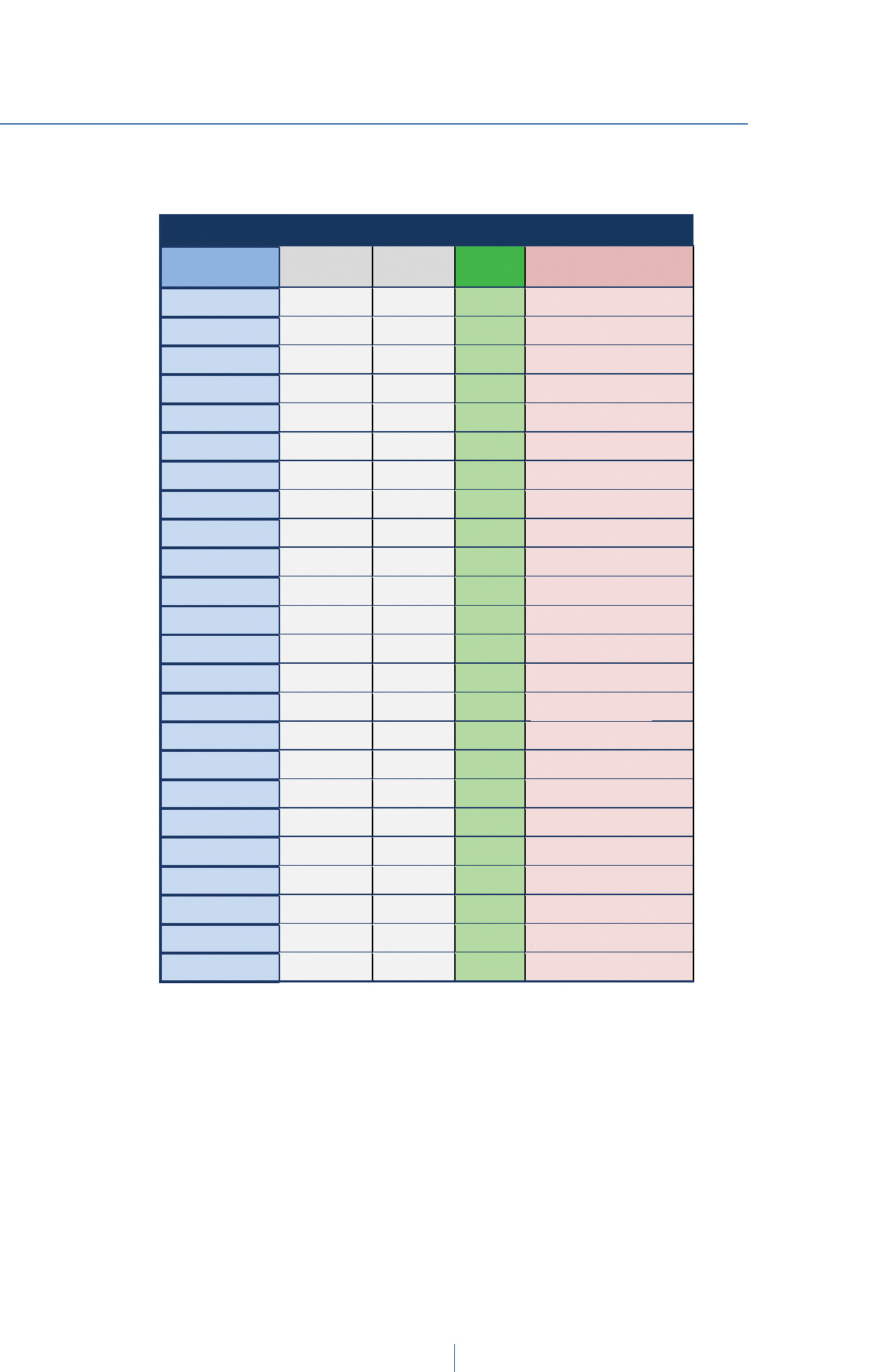
vii
Preface
Romanization: Vowels
Basic Vowels: |
||||
Vowels |
IPA |
Royal Thai |
This |
Remarks: |
-ะ -ั- |
–/a/ |
a |
a |
short a as in "car" |
-า |
/aː/ |
a |
a: |
long as in "father" |
-ิ |
/i/ |
i |
i |
short as in "this" |
-ี |
/iː/ |
i |
i: |
long as in "see" |
-ึ |
/ɯ/ |
ue |
ue |
short as in "true" |
-ือ -ื- |
/ɯː/ |
ue |
ue: |
long as in "good" |
-ุ |
/u/ |
u |
u |
short as in "who" |
-ู |
/uː/ |
u |
u: |
long as in "boot" |
เ-ะ เ-็- |
/e/ |
e |
e |
short as in "set" |
เ- |
/eː/ |
e |
e: |
long as in "there" |
แ-ะ แ-็- |
/ɛ/ |
ae |
æ |
short as in "cat" |
แ- |
/ɛː/ |
ae |
æ: |
long as in "dad" |
โ-ะ |
/o/ |
o |
o |
short as in "got" |
โ- |
/oː/ |
o |
o: |
long as in "god" |
เ-าะ |
/ɔ/ |
o |
ø |
short as in "caught" |
-อ |
/ɔː/ |
o |
ø: |
long as in "saw" |
เ-อะ เ-ิ- |
/ɤ/ |
oe |
œ |
short as in "the" |
เ-อ |
/ɤː/ |
oe |
œ: |
long as in "per" |
เ-ียะ |
/ia/ |
ia |
ia |
short as in "Fiat" |
เ-ีย |
/iːa/ |
ia |
i:a |
long as in "cheer" |
เ-ือะ |
/ɯa/ |
uea |
uea |
short as "ue" + "a" |
เ-ือ |
/ɯːa/ |
uea |
ue:a |
long as "ue:" + "a" |
-ัวะ |
/ua/ |
ua |
ua |
short as in "sure" |
-ัว -ว- |
/uːa/ |
ua |
u:a |
long as in "your" |
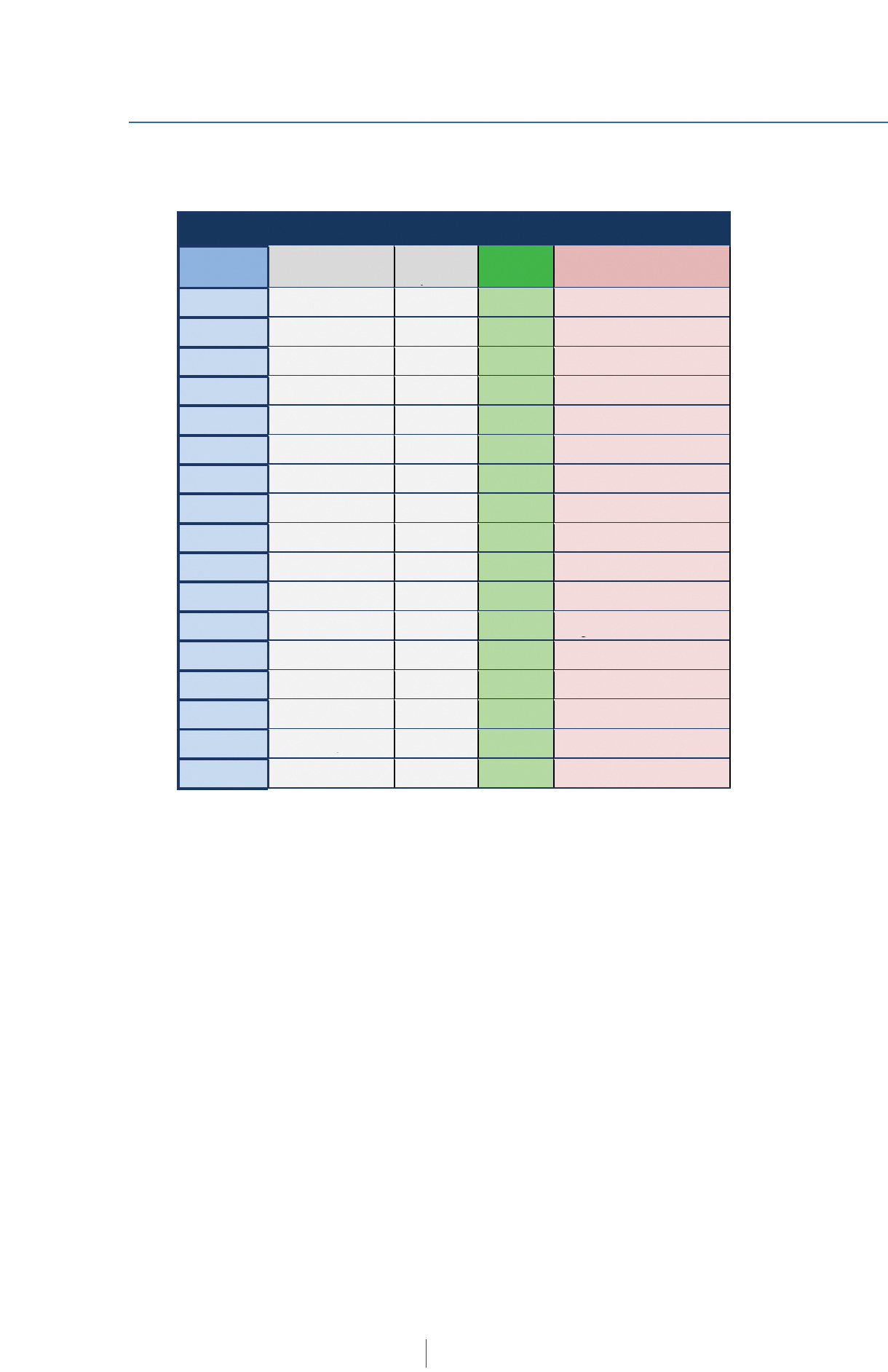
viii
Preface
Compound Vowels (Diphthongs): |
||||
Vowels |
IPA |
Royal Thai |
This |
Remarks: |
ไ- -ใ- |
/aj/ |
ai |
ai |
short as in "Thai" |
-าย |
/aːj/ |
ai |
a:i |
long as in "die" |
เ-า |
/aw/ |
ao |
ao |
short as in "how" |
-าว |
/aːw/ |
ao |
a:o |
long as in "cow" |
เ-็ว |
/ew/ |
eo |
eo |
short as in "help" |
เ-ว |
/eːw/ |
eo |
e:o |
long as in "sale" |
แ-็ว |
/ɛw/ |
aeo |
æo |
short as "æ" + "o" |
แ-ว |
/ɛːw/ |
aeo |
æ:o |
long as "æ:" + "o" |
-ิว |
/iw/ |
io |
iu |
short as in "new" |
-ำ |
/am/ |
am |
am |
short as in "rum" |
-รร(-) |
/am/ |
an |
an |
short as in "run" |
โ-ย |
/oːj/ |
oi |
o:i |
long as "o:" + "i" |
-อย |
/ɔːj/ |
oi |
ø:i |
long as "ø:" + "i" |
เ-ย |
/ɤːj/ |
oei |
œ:i |
long as "œ:" + "i" |
เ-ียว |
/iaw/ |
iiao |
i:ao |
long as "i:a" + "o" |
-วย |
/uaj/ |
uai |
u:ai |
long as "u:a" + "i" |
เ-ือย |
/ɯaj/ |
ueai |
ue:ai |
long as "ue:a" + "i" |
Now have fun learning Thai!
Bangkok & Zurich, January 2013 Marco Pronk

ix
Contents
Contents
1 |
Origins and Characteristics of the Thai Language |
||
2 |
The Thai Alphabet |
|
|
|
2.1 |
Consonants |
|
|
|
Table of Consonants |
|
|
2.2 |
Vowels |
|
|
|
Basic Vowels |
|
|
|
Vowel Compositions |
|
|
|
Sanskrit-Vowel-Consonants |
|
|
2.3 |
Other Characters |
|
|
|
Special Characters |
|
|
|
Tonal Markers |
|
|
|
Numbers |
|
|
2.4 |
Reading Rules |
|
|
|
Basic Rule |
|
|
|
Reading Rule 1 (short o) |
|
|
|
Reading Rule 2 (short a) |
|
|
|
Reading Rule 3 (NO short a) |
|
3 |
Intonation |
|
|
|
3.1 |
The Scale of Tones |
|
|
3.2 |
Intonation and Alphabet |
|
|
|
Table: Determination of Tones |
|
|
|
Tones in Syllables WITH Tonal Markers |
|
|
|
Tones in Syllables WITHOUT Tonal Markers |
|
|
3.3 |
Additional Intonation Rules |
|
|
|
Intonation Rule 1 |
|
|
|
Intonation Rule 2a |
|
|
|
Intonation Rule 2b |
|
|
|
Intonation Rule 3 |
|
|
|
Intonation using Sanskrit-Vowel-Consonants |
|

x
Contents
4 |
Grammar |
|
|
|
4.1 |
Basic Concepts and Terms |
|
|
4.2 |
Questions and Answers |
|
|
|
Simple Statement |
|
|
|
Simple Verbal Statement |
|
|
|
Simple Adjective Statement |
|
|
|
Negative Statement |
|
|
|
Neutral Question |
|
|
|
Questions and Answers |
|
|
|
Negative Question |
|
|
|
Question with Single Subject |
|
|
|
Specific Questions |
|
|
4.3 |
Verbs |
|
|
|
Future Tense |
|
|
|
Past Tense |
|
|
|
Present Continuous |
|
|
|
Active and Passive Voice |
|
|
|
To Go (ไป pai) and To Come (มา ma:) |
|
|
|
Which "To Be"? |
|
|
|
Which "To Want"? |
|
|
|
Which "Can"/"To Be Able"? |
|
|
|
How to use ว่า wa: |
|
|
|
The Multifunctional Word ให้ hai |
|
|
4.4 |
Adjectives |
|
|
|
Comparative with กว่า gwa: |
|
|
|
Superlative with ที่สุด thi:-sud |
|
|
|
Excess with เกินไป gœn-pai |
|
|
|
Identity with เท่า thao, พอ phø: or เหมือน mue:an |
|
|
|
"Adjectivation" of Verbs with น่า na: or ขี้ khi: |
|

xi
Contents
|
4.5 |
Nouns |
|
|
|
Nominalization with การ ga:n or ความ khwa:m |
|
|
|
Personification |
|
|
4.6 |
Classifiers |
|
|
|
What is a classifier? |
|
|
|
Application I: Counting and Quantification |
|
|
|
Application II: Specification |
|
|
|
Combinations: Quantification with Specification |
|
|
4.7 |
Pronouns, Forms of Address, Possession |
|
|
|
Personal Pronouns |
|
|
|
Form of Address |
|
|
|
Possession |
|
|
4.8 |
Demonstrative Pronouns: This and That |
|
|
4.9 |
Miscellaneous |
|
|
|
Particle ที่ thi: |
|
|
|
Place: Here, There, Everywhere |
|
|
|
Time: Now, Then, Always |
|
|
|
Per (Unit) |
|
|
|
And |
|
|
|
Or |
|
|
|
Never Mind / You Are Welcome |
|
|
|
Please |
|
|
|
Particles of Politeness |
|
|
|
Particles of Emphasis |
|
|
|
Command |
|
|
|
Particle ก็ gø |
|
|
|
Any with ก็ได้ gø-dai |
|
|
4.10 |
Structure of More Complex Phrases (Examples) |
|

xii
Contents
Appendix |
|
Personal Pronouns |
|
Question Particles |
|
Negation Particles |
|
Figures |
|
Money / Linear & Square Measures |
|
Time |
|
Date |
|
Colors |
|
Family & Kinship |
|
Clothing |
|
Body |
|
Work & Profession |
|
House & Living |
|
Communication & Media |
|
Traffic |
|
Fruit |
|
Trees, Flowers, Nuts & Seeds |
|
Vegetables & Herbs |
|
Animals |
|
Food |
|
Geography |
|
Provinces |
|
Bangkok: Important Places & Roads |
|
Common Classifiers |
|
Tables (Summary) |
|
Table of Consonants |
|
Table of Vowels |
|
The 5 Tones |
|
Table: Determination of Tones |
|


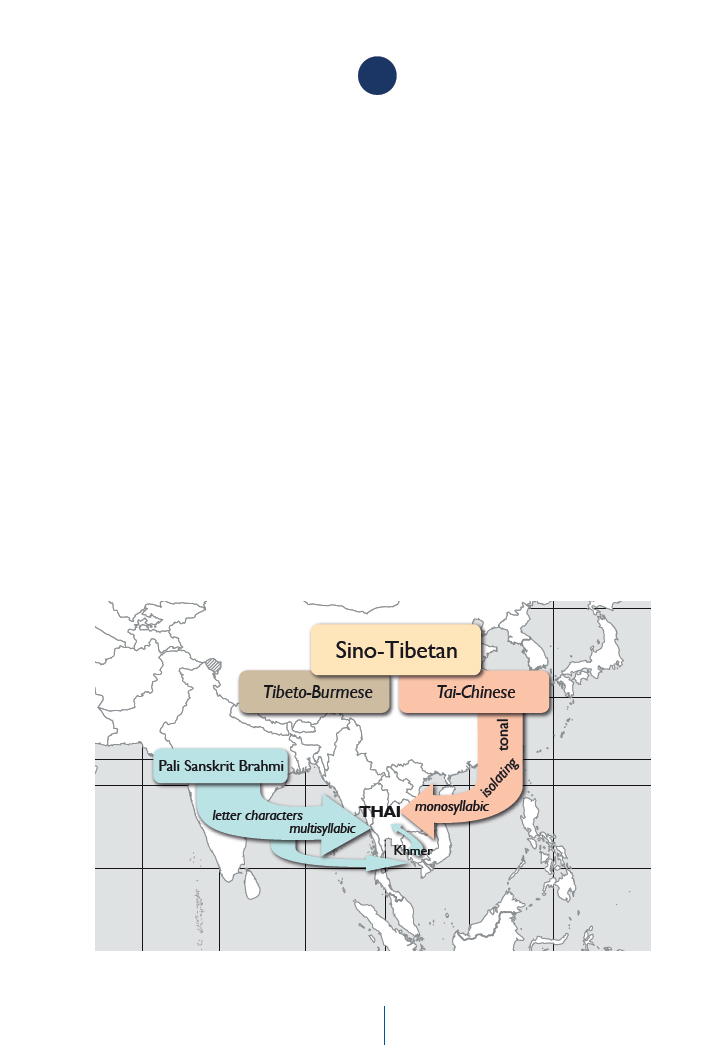
1
1
Origins and Characteristics
of the Thai Languge
When learning a foreign language, you need to familiarize yourself with particularities and expressions that may appear unusual, sometimes even strange and odd. To comprehend the most important characteristics, it is helpful to set out from an overview on origins and developments of that language. Such background information may be of particular interest when learning Thai, because it blends some patterns of two very different types of language systems. Therefore, let's first take a quick look at those roots and characteristics.
Thai is, simply put, a unique combination of the characteristics of Indic and Chinese types of languages. This means that Thai unites the pecularities of two large language families: Thai has similarities with Chinese languages, on the one hand, and with Indic (Pali-Sanskrit-Brahmi) languages, on the other hand.
Origins and Characteristics of the Thai Language:

2
1
Origins and Characteristics of the Thai Language
The Sino-Tibetan language family can be divided into two major groups: quite early in linguistic history, the Tibeto-Burmese group split off from the Tai-Chinese group. It seems that the latter had greater importance for the development of early Thai. (The precursor language family is referred to as Tai, whereas Thai is the language that was standardized in the context of Thailand as a modern nation state.) The details of these developments have remained quite speculative until today.
On the one hand, early Chinese sources identified the so-called Tai-Kadai as a singular language group with features clearly different from Chinese. In other words, Tai languages developed in a quite distinct mode – perhaps they do not even originate in Chinese roots at all. On the other hand, it is obvious that modern Thai has characteristics strikingly similar to Chinese. Therefore, it is plausible to suggest a successive detachment of Tai-dialects from other Chinese languages with the migration of Tai-speakers from today's Yunnan, Szechuan, Southeastern China, Northern Vietnam and Laos. So people settling in the northern basin of (today's) Chaophraya river from the 7th through the 12th centuries spoke a Tai-dialect with clearly Chinese-like features.
Due to its partly Chinese affinity, Thai Language is
▶ a tonal lanuage:
every syllable must be pronounced in a predefined tone
(Thai consists of five such tones);
▶ an isolating language (also: analytic language):
every single word remains unchanged
(e.g. Thai does not us conjugation, tenses, declination, plural
endings, etc.);
▶ a (partly) monosyllabic language:
many Thai words consist only of one single syllable.

3
1
Origins and Characteristics of the Thai Language
Most of the numerous monosyllabic words are colloquial expressions used in everyday language: typically, words representing persons (e.g. I: phom/chan; you: khun), animals (dog: ma:; horse: ma:), plants (tree: ton; blossom: dø:k), simple objects (water: nam; shirt: sue:a), activities (to go: pai; to buy: sue:), or characteristics (good: di:; beautiful: su:ai) are monosyllabic. Probably it is not a coincidence that the tonal Tai-Chinese languages have produced a large number of such single-syllable words. In tonal languages like Thai, the meaning of a syllable or word changes with modification of the voiced tone. Therefore, fewer syllables are needed for creating a specific quantity of words. Although there may not be a word for each syllable in each tone, the example of "mai" can illustrate what this means: mai (middle tone) means "mile", mai (low tone) means "new", mai (falling tone) means "not" or "to burn", mai (high tone) is a question particle, and mai (rising tone) means "silk". (For a more concise explanation of tones and the colors representing them in this book, please refer to Chapter 3 on Intonation.)
During the 11th-13th centuries, when the first Siamese kingdoms were established by the Tai people, their relationships to the Indian Subcontinent intensified through direct contacts with sailors, traders, Buddhist pilgrims and priests. Apart from merchandise, the exchange brought new types of knowledge: for the first time, the Thai speakers received and studied texts on Theravada Buddhism, mainly promoted by the Siamese court. However, these scriptures were almost exclusively in ancient Pali language. So for the Siamese royals and nobility, proficiency in Pali language became an important key to access Buddhist philosophy and views of life. This is mainly how the Indic languages Pali, Sanskrit and Brahmi played an increasingly important role for the further development of Thai. Because the public's interest in

4
1
Origins and Characteristics of the Thai Language
Buddhist thought and wisdom increased continuously, the texts were to a large dergree adapted to the Thai language context. However, the study of Buddhism in Thailand highly depends on the knowledge of Pali even today.
Most of the characteristics of modern written Thai, however, were adopted from Khmer language, which in turn had been strongly influenced by the Indic languages of Brahmi and Sanskrit. Old Khmer writings mainly dealt with the Mahayana version of Buddhism written in Sanskrit. The Khmer letters stem from the Indic Brahmi scripture.
The official history of the Thai language chronicles a formal founding of Thai by Pho Khun Ramkhamhaeng, a popular king of the Sukhothai period. For his famous stone inscription, which is said to be the oldest written account in Thai, he is dubbed and adored as "father" of the Thai scripture. More critical Thai historians doubt this version and speculate that this story was fabricated in the 19th century, in order to glorify the achievements of the Sukhothai period and its major figures. To sum all up, there is no doubt that the Thai alphabet has originated in Khmer and Brahmi scripts, and has ever since then developed into an independant system of letters, tonal marks and other characters.
Along with the writings came words, of course, so Thai has also adopted a considerable pool of vocabulary from Indic languagaes. A direct influcence of spoken Khmer on Thai is uncertain, though it may have been stronger than widely presumed (or admitted) today. Typically, the expressions of Indic origin adopted in Thai are long words with multiple syllables. Apart from this being typical for Indic languages in general, there may be a second reason for it: because Thai has particularly been influenced by Indic languages through texts and written accounts, more complex topics such as religion, philosophy, cosmology, science, arts and administration also meant the use of more complex words and phrases. Today, of course, these long and

5
1
Origins and Characteristics of the Thai Language
Due to its partly Indic origin, Thai language has
▶ an alphabet with letter-type characters:
the script system consists of consonants, vowels, tonal marks
and some more characters.
▶ a consiberable number of multisyllabic words:
there are many long expressions consisting of multiple syllables.
occasionally complicated epxressions are no longer exclusively used by scholars, academics or civil servants, they now are integral and normal building blocks of everyday language. Everybody knows and uses words like phutthasa:sana: (Buddhism), phruesajiga:yon (November) or maha:withaya:lai (university). Nonetheless, it is still quite obvious that Thai has been influenced by Indic languages mainly through written sources. As a consequence, there are considerable differences between spoken colloquial language and written Thai. Because of this, much that can be learned from a conversation in daily life may not be of much use when it comes to writing and reading more formal and official documents – and vice versa. So reading and understanding a newspaper can be a comparatively difficult task, even for people who actually speak Thai fluently. It may be encouraging to know, though, that this is not only true for foreigners learning Thai as a foreign language. Even native speakers occasionally struggle with the difficulties of written language. So please do not feel discouraged at this point: When you start learning to read and write, it is advised to simply set out from focusing on easier texts like menus, advertising or children's textbooks.

6
1
Origins and Characteristics of the Thai Language
Apart from the two main branches of development sketched thus far, Thai language has – in less significant ways though – been influenced by other languages. As a consequence of the constant relationships and exchanges with neighbors in the region – above all, Malaysians, Burmese, Vietnamese – some of their terms and expressions have gradually been adopted as well. Although Siam politically remained independent during the times of colonialist rule, some Portuguese, French and English idioms had been introduced through the contacts with European envoys, missionaries, and traders. The word khanom-pang for "bread", for example, contains the Portuguese "pão" (pang); and the expression farang for "Westerner" derives from the French word "France".
Today, the Thai language of course still is under a constant and continous flux, probably more intense and at a faster pace than ever before. Through tourism, cinema, music, television, email, chatrooms and social networks, new slang words and expressions spread so enormously fast, that even regular users appear to have difficulties in keeping pace. No need to mention that "inthœ:net" (internet), "websai" (website) and "fe:t-buk" (facebook) are just as much part of everyday language, as expressions like aitim (ice-cream), sapa:getti: (spaghetti), dinnœ: (dinner), chøpping (shopping), and sentœ: (center), which have become Thai words during the past few decades. But new words are not just copied from other languages, much of the slang can also be newly invented words expressing new social conditions.
Finally, it is important to stress that the Thai language group does not simply consist of one singular language, but rather of a variety of dialects with different intonation and vocabulary variations. Lao language, for instance, can be considered as a part of the Thai language group, just as other dialects spoken in different regions within Thailand.

7
1
Origins and Characteristics of the Thai Language
This book is based on and outlines the dialect of central Thailand as spoken in and around Bangkok. "Central Thai" is also named "Standard Thai", because it serves as the standard for the official administration, education and media of Thailand.
Bibliography & Further Reading:
Diller, Anthony (1993): What Makes Central Thai a National Language? In: Reynolds, Craig J. (ed.), National Identity and its Defenders, Thailand, 1939-1989, 87-131. Chiang Mai: Silkworm Books.
Lach, Donald F. (1965): Asia in The Making of Europe. Volume 1: The Century of Discovery, Book 2. Chicago and London: The University of Chicago Press.
Mulder, Niels (1997): Thai Images. The Culture of the Public World. Chiang Mai: Silkworm Books.
Reynolds, Frank E.; Reynolds, Mani B. (1982): Three Worlds According to King Ruang. A Thai Buddhist Cosmology. Berkeley: Asian Humanities Press.
Thongchai Winichakul (1994): Siam Mapped. A History of the Geobody of a Nation. Chiang Mai: Silkworm Books.
Wyatt, David K. (1984): Thailand - A Short History. Bangkok: Trasvin Publications.
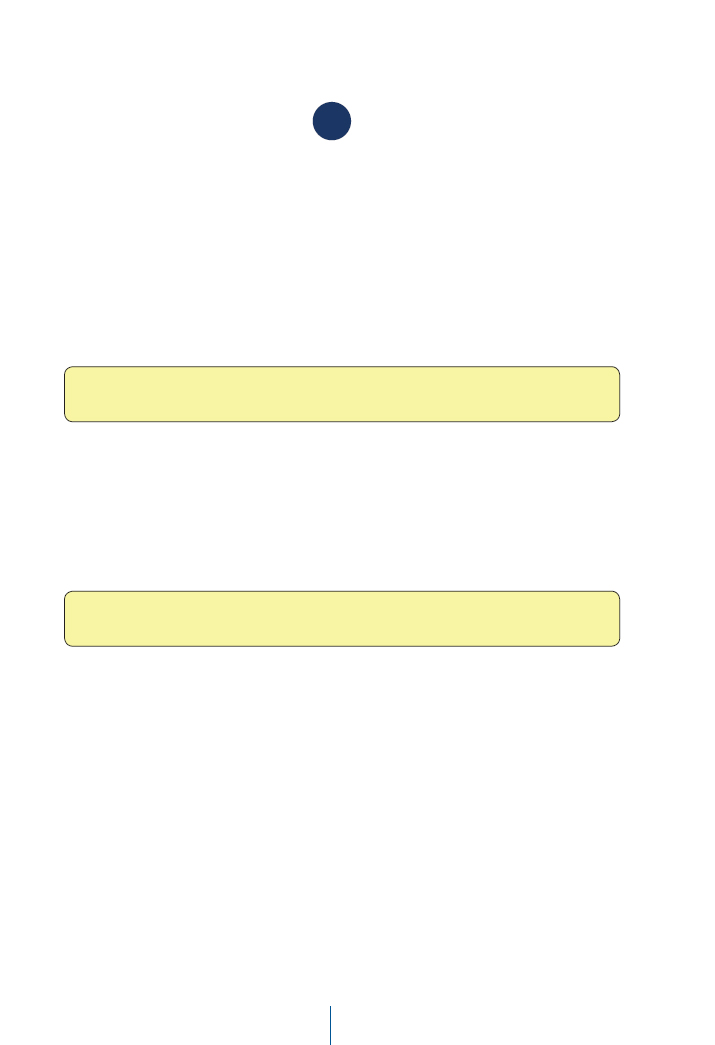
8
2
The Thai Alphabet
tu:a-aksøn-thai ตัวอักษรไทย
It was just emphasized in the introductory chapter that the Thai alphabet (tu:a-aksøn-thai) has derived from Indic Brahmi via Khmer languages. This means that the Thai alphabet has the following characteristics:
▶ The Thai alphabet consists of letters.
This means that a single character does not have a meaning for itself. Just like in English, letters need to be assembled to create syllables and words. The letters are subdivided into consonants and vowels. In addition, Thai uses tonal markers and some special characters.
▶ Capitalization ist unknown in Thai language.
Every letter exists in one version only (not inlcuding typographical variations, of course). Therefore, capitalization is neither used in any nouns or names, nor at the beginning of a sentence.
This book aims at sensitizing the reader for the importance of learning to read Thai at a very early stage. Only those who can read can continue their studies indepently. Moreover, knowing to read Thai words leads to a more precise pronunciation, since any romanized transcription is a mere and inaccurate approximation of the more diversified shades and nuances in the sounds of the Thai letters.
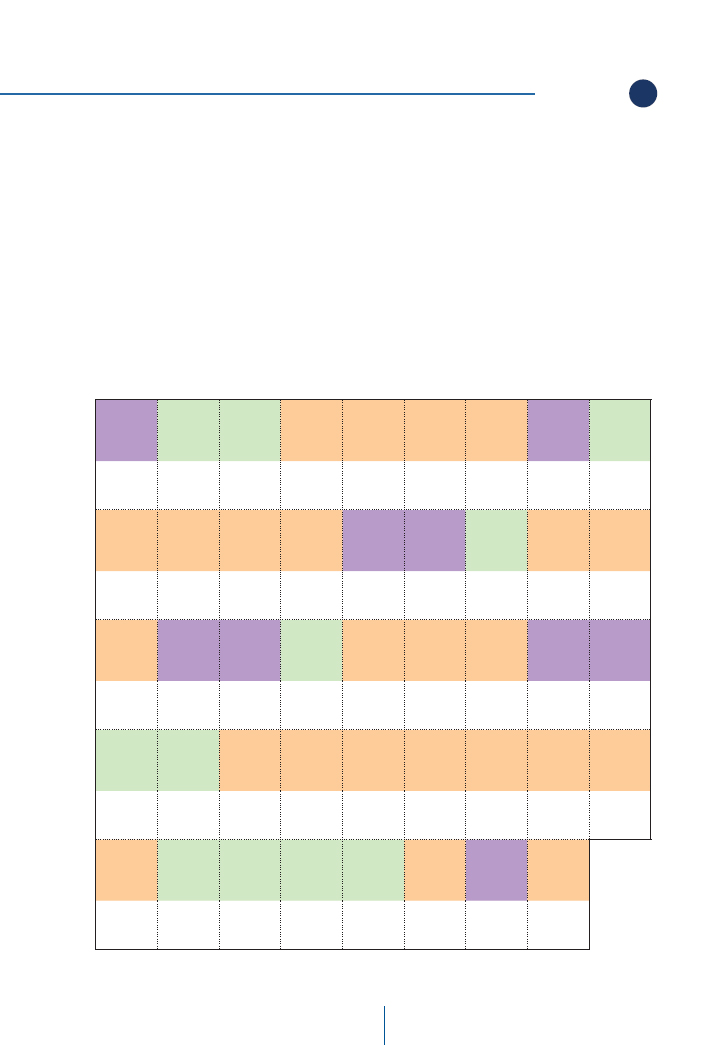
9
2
2.1 Consonants
The 44 consonants (phayanchana) are the backbone of the Thai alphabet: Each syllable consists of at least one consonant. Just like in every alphabet, the Thai letters have a specific order: "from A to Z" here meaning from "from ก gø-gai to ฮ hø-nok-hu:k". The following table shows all consonants in their regular sequence that would also be found in a dictionary:
ก |
ข |
ฃ |
ค |
ฅ |
ฆ |
ง |
จ |
ฉ |
gø- |
khø- |
khø- |
khø-khwa:i |
khø- |
khø- |
ngø- |
jø-ja:n |
chø- |
ช |
ซ |
ฌ |
ญ |
ฎ |
ฏ |
ฐ |
ฑ |
ฒ |
chø- |
sø- |
chø- |
yø- |
dø- |
tø- |
thø- |
thø- |
thø- |
ณ |
ด |
ต |
ถ |
ท |
ธ |
น |
บ |
ป |
nø- |
dø- |
tø- |
thø- |
thø- |
thø- |
nø- |
bø- |
pø- |
ผ |
ฝ |
พ |
ฟ |
ภ |
ม |
ย |
ร |
ล |
phø- |
fø- |
phø- |
fø- |
phø- |
mø- |
yø- |
rø- |
lø- |
ว |
ศ |
ษ |
ส |
ห |
ฬ |
อ |
ฮ |
|
wø- |
sø- |
sø- |
sø- |
hø- |
lø- |
‚ø- |
hø- |
Please click the Thai characters to hear the audio.






